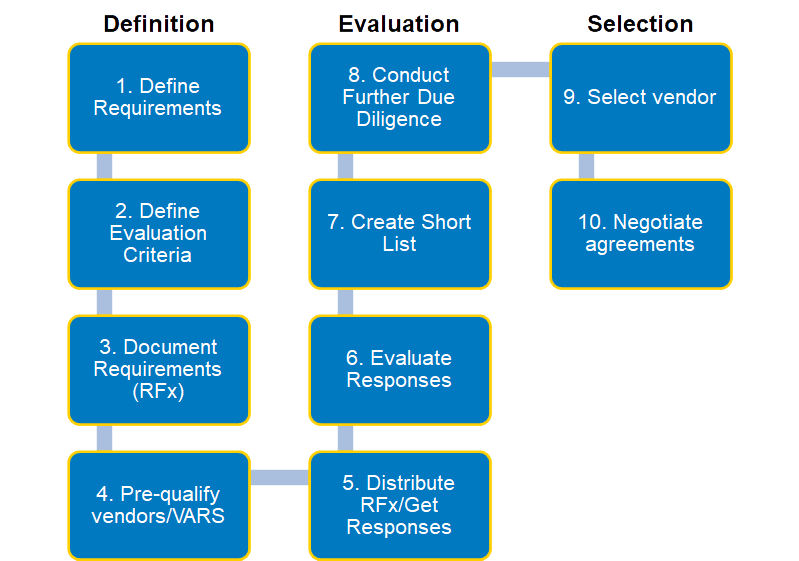Once you’ve decided which technologies you’d like to pursue for your contact center, you’ll need to establish the parameters and timeframe for your selection process. You may want to check out a post from a few years back that is still relevant, entitled How to Streamline the Vendor Selection Process. That blog discusses variations in depth and breadth of written documents – requests for proposal (RFP), information and quote (RFIQ), and quote (RFQ) – and when to use each. In a nutshell, the bigger and more complex your solution needs, the more prudent it is to write and read more!.
 Regardless of size and scope, you should start by pre-qualifying vendors and value-added resellers (VARs) with a bit of up-front research, discussions, and/or brief questionnaires. This exercise can help you refine your requirements while getting a handle on where and how to bring in partners for services, value-added functionality, and expertise specific to your size and vertical market. VAR-specific exploration might include inquiries into their professional services, support structure, service level agreements (SLAs), experience, size, and financial stability. This modest investment in time and energy yields a sizeable payoff for both buyers and sellers.
Regardless of size and scope, you should start by pre-qualifying vendors and value-added resellers (VARs) with a bit of up-front research, discussions, and/or brief questionnaires. This exercise can help you refine your requirements while getting a handle on where and how to bring in partners for services, value-added functionality, and expertise specific to your size and vertical market. VAR-specific exploration might include inquiries into their professional services, support structure, service level agreements (SLAs), experience, size, and financial stability. This modest investment in time and energy yields a sizeable payoff for both buyers and sellers.
As you dive deeper into the process, document key requirements – size, functions, integration, implementation, and support expectations – and provide them to prospective bidders (those pre-qualified!). Engage with them through targeted discussions on your needs with hands-on demonstrations to provide evidence of their ability to meet them. As you review their pricing, get as close as you can to apples-to-apples comparisons. Make sure you understand licensing and services and know that you will need to iterate for clarity and completeness.
Keep in mind there are differences in license types or how you pay for the service. Ask about named versus concurrent license fees (and definitions of how they are counted) as well as usage costs – e.g., per minute, per session. Note that license “bundles” may be very advantageous – e.g., bundle in digital channels, bundle in WEM capabilities. In other cases, you may purchase a la carte due to limited functional needs, point solutions, your overall roadmap, or your desire to avoid paying for something you don’t yet need. Work with your vendor to explore how they can meet your needs at a good price point!
You aren’t finished when you select the solution and vendor. Here’s a brief check list to make sure you are armed for a successful negotiation:
- Contract term (e.g., none, 1 year, 3 year, or more) and ramp period
- Licensing fees by channel or function and licensing and payment structure (e.g., named vs. concurrent, bundles or a la carte, floor vs. flex)
- Scope and Statement of Work (SOW) for implementation professional services, and associated fees
- Usage fees and how charged (and any “fair usage” allocations included with licenses) – toll-free, inbound, outbound, message, session, storage, etc.
- Other costs: BYOC, additional storage, value-added support services, etc.
If you haven’t been though the process in awhile or are charting unfamiliar waters, the procurement process can feel like a “fun house” with distorted images, blind alleys, a lot of noise… and not much fun! We’ve been down this road with many clients in all shapes, sizes, and industries. Don’t be afraid to contact us for assistance.
